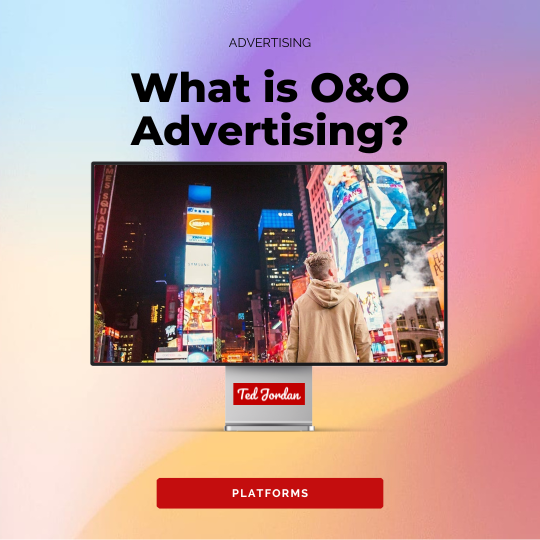When you work in marketing or in advertising, you often encounter a lot of acronyms and new terms. It’s not always easy to understand the difference between shorten names or acronyms… After a while, you get used to these terms and even use them without realising it. But first, you need to learn what they mean and how to differentiate words like MarTech and AdTech.
What is AdTech? What does MarTech mean?
What’s the difference between MarTech and AdTech stacks?
And why using these tools, software, apps and platforms is important in marketing?

What is AdTech?
AdTech means advertising technology and refers to software, platforms and tools used in digital advertising by publishers, advertisers and advertising agencies. AdTech automates media buying and selling across platforms, ad formats, countries, and much more.
AdTech facilitates campaigns’ delivery and includes targeting, tracking, machine learning, optimisation and cross-device advertising. It also includes RTB and analytics. If you run Connected TV ads, DOOH campaigns or Display and Native advertising content, you are already using AdTech.
Advertising technology improves return on investment (ROI) while saving time and money. It does not rely on manual processes like insertion orders, for example. Automation is used as much as possible to create seamless campaigns.
Exploit AdTech stacks for better performance and ease.
Curious to learn how to use programmatic platforms? Access our free Programmatic Training now!
What is MarTech?
MarTech is the shorten term for marketing technology. MarTech englobes tools and software used by marketers to run successful campaigns along the customer journey: CRM, customer data, prospecting, sales reporting, etc. With MarTech, marketing teams can plan, analyse and execute strategies through automation.
Social media management, newsletters, SEO, personalisation, audience creation… MarTech streamlines marketing operations and team collaboration. Thanks to an optimised workflow, marketers are able to improve their sales funnel.

By 2025, B2B MarTech spending in the US is expected to reach 10.11 billion dollars. North American companies are the biggest MarTech users, followed by Western Europe.
Marketing technology is great for collecting customer information: name, phone number, email, address, purchase history, hobbies, etc. It’s perfect for audience targeting: marketers use MarTech to segment their customer database and send targeted messages (emails, newsletters, etc.). The goal is to build strong loyalty and long-term relationships between customers and brands.
That’s where MarTech stacks come in handy.
“AdTech brings new customers, MarTech keeps them.”
Ted Jordan
MarTech vs AdTech stacks
Now that you know what MarTech and AdTech terms refer to, it’s time to talk about stacks!
Tech stacks are sets of technologies, tools, software or platforms created to facilitate a workflow or an action, like advertising. In the US, companies use on average 6.5 AdTech and MarTech tools per tech stack, with 3 out of 20 advertising agencies using more than 10 tools.
Some stacks offer both MarTech and AdTech features: Adobe, Salesforce, HubSpot, Oracle, Google, etc. On the other end, some companies focus only on programmatic advertising: Azerion and Adform are great AdTech stacks to use if you run programmatic campaigns in the US or in Europe.
Nowadays, MarTech and AdTech stacks include more software and tools than they used to. For example, there were only 150 MarTech tools available in 2011. In 2024, there were more than 14,000! AI played a huge part in tech stacks evolution; expect a larger choice of tech stacks in 2025!
Stacks are great for creating sales opportunities and perfect targeting and attribution models. For example, MarTech stacks allow companies to reach customers without the need of spending money on ads (Programmatic, Search, Native and Display, etc.).
Keep in mind that you have to stay compliant with data regulations, such as GDPR, when using tech stacks.
So, what do MarTech and AdTech stacks include?

What you’ll find in AdTech stacks:
- Demand-Side Platforms like Adform.
- Supply-Side Platforms like Xandr.
- DMPs like Nielsen.
- Ad networks like Taboola.
- Ad exchanges like OpenX.
- SEMs (Search Engine Marketing) like Google Ads.
- Brand safety tools and tracking like IAS.
What you’ll find in MarTech stacks:
- CRMs like Salesforce or HubSpot.
- Web analytics tools like Google Analytics or Piwik.
- Social media management tools like Hootsuite or Buffer.
- Marketing automation platforms (MAPs) like Marketo (Adobe) or HubSpot.
- SEO tools like SEMrush, Ahrefs or SpyFu.
- CMS like Joomla, WordPress or Brightspot.
- Data visualisation tools like Tableau.
- CDPs like Tealium.
Difference between AdTech and MarTech
AdTech and MarTech have different goals but can work together. For example, MarTech data (first-party data) can be used in advertising stacks to better target potential customers. The convergence of AdTech and MadTech is called MadTech. Did you know that?

With MadTech, you can personalise ads and messages to the next level to create a feeling of uniqueness. You can also measure marketing and advertising campaigns across devices and media with precision. The power of MadTech has no limits!
If you’re still unsure about the difference between AdTech and MarTech, here is a quick recap:
| AdTech | MarTech | |
|---|---|---|
| Users | Advertisers, publishers, digital advertising agencies. | SMBs, marketing teams, sales teams. |
| Goal | Selling and buying ad placements in a seamless way. Finding new customers to increase conversion numbers while using targeting features and data analytics, combined with machine learning. | Reaching out to former and current customers to increase sales. Growing leads and developing customer partnerships to create long-term engagement. |
| Main billing methods | Commission-based (on spend), Pay-Per-Click (PPC) or Pay-Per-Use (PPU). | Subscription-based. |
| Data | First- and third-party data. | Zero- and first-party data. |
| Targeted audience | New potential customers and former ones. | Customers who have already interacted with the brand. |
| Platforms and tools | DSPs SSPs Ad exchanges Ad networks DMPs SEMs Brand safety | CRMs Web analytics Social media management SEO Marketing automation CMS Data visualisation CDPs |
| Main focus | Campaign execution and budget spend. | The entire customer journey (awareness, conversion and post-conversion engagement). |
Conclusion
MarTech vs AdTech stacks: depending on your goals and your situation (are you a marketer? an ad agency? a publisher?), you may want to use one or the other.
AdTech stacks are perfect for advertisers, publishers and advertising agencies, while MarTech stacks help marketers streamline customer journeys and collaboration between teams or agencies.
And if you need both, MarTech is the solution! The convergence between advertising and marketing technologies will allow you to step up your game.
Frequently Asked Questions
AdTech and MarTech include two types of technology: advertising technology (AdTech) and marketing technology (MarTech). Both use automation and deliver personalised messages to the right audience. AdTech brings new customers, MarTech keeps them.
Marketing focuses on brand awareness and customer relationship with a brand, while advertising mainly focuses on immediate actions and conversions. The main difference between marketing and advertising is that marketing may be free, while advertising is associated with ad placement fees (Search, Native, Display, Programmatic advertising).
An AdTech stack is a set of tools, software, apps and platforms used in advertising to facilitate the selling and buying process of ad placements.
For example, Azerion and Adform offer AdTech stacks to programmatic advertisers and marketers.
A MarTech stack is a set of tools, platforms, software and apps used in marketing to automate responses and guide customers through their entire journey (before and after a conversion).
AdTech stacks are used by advertising agencies and publishers. In programmatic advertising, some tools are mandatory to launch successful campaigns: DSPs, SSPs, DMPs, etc. These tools and platforms are included in AdTech stacks.
In 2025, the best AdTech stack for programmatic campaigns is Azerion’s.
MadTech describes the convergence between advertising technology (AdTech) and marketing technology (MarTech).




One Response
I always find it tricky to differentiate between MarTech and AdTech, but this breakdown really helps clarify the key differences. It’s crucial to understand how each tech stack can complement the other in a marketing strategy.